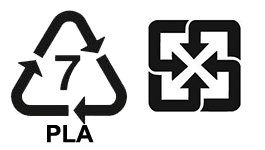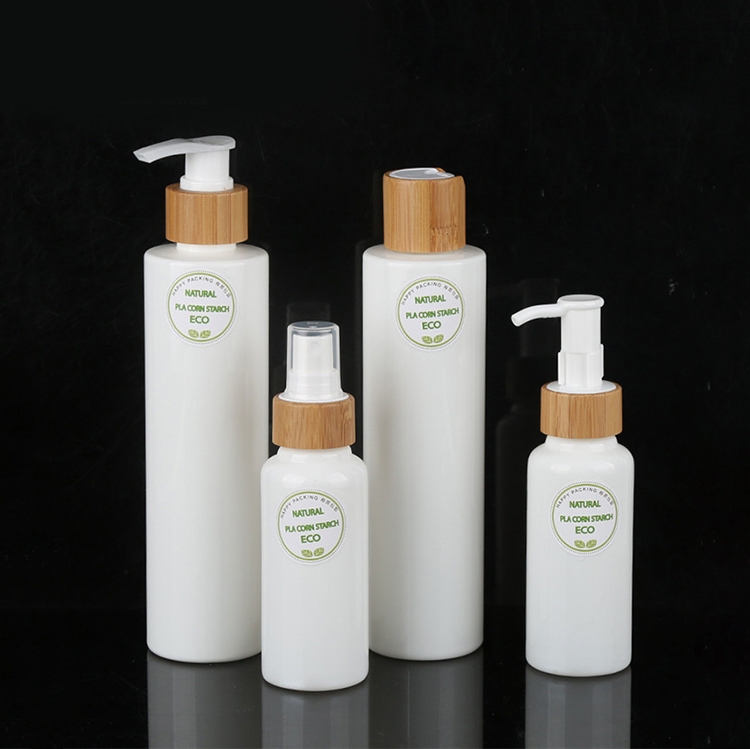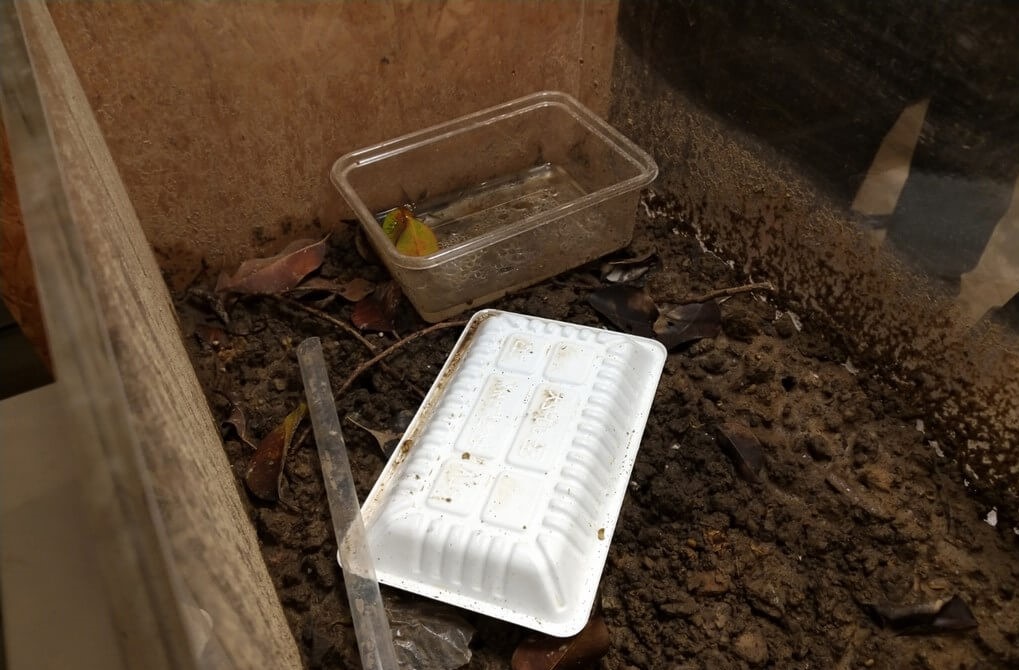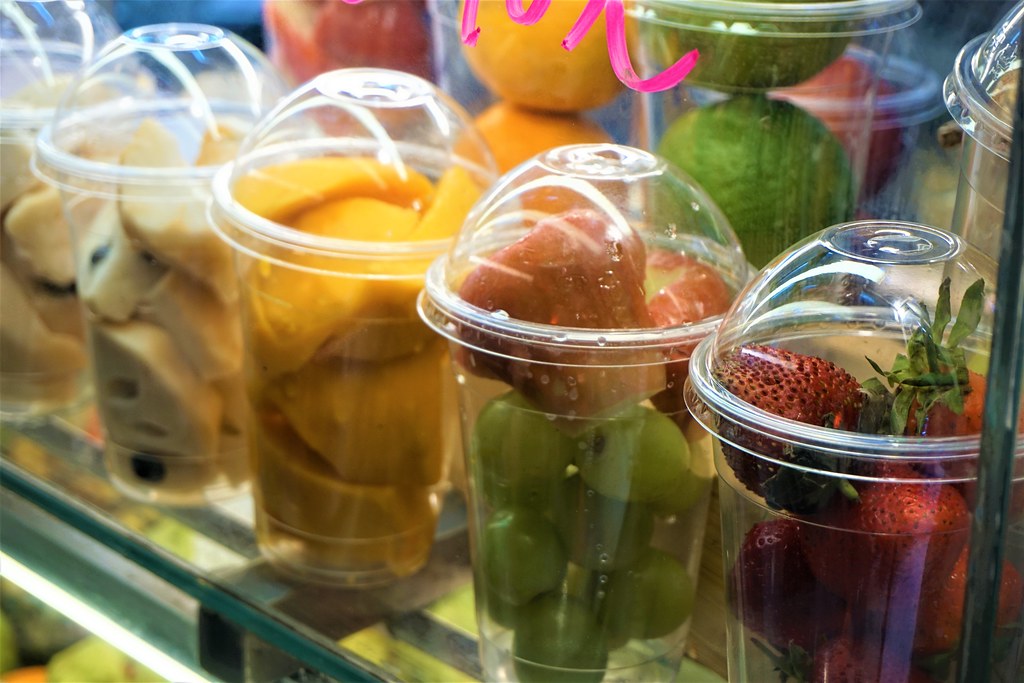What is PLA? Why PLA Shouldn’t Replace Single-Use Plastic in Cosmetic
PLA, or polylactic acid, is a biodegradable plastic commonly used in packaging materials, including cosmetic packaging, and other single-use items. It is primarily made from plant-based raw materials like sugarcane, corn, and potatoes. Due to its renewable, plant-based origins, PLA is often marketed as a more sustainable alternative to traditional petroleum-based plastics, particularly in industries like food packaging, skin care packaging, and plastic bottles.
However, while PLA is often considered eco-friendly, it doesn't provide a complete solution to the growing problem of plastic pollution. This article explores the reasons why PLA should not be viewed as a catch-all solution for
replacing single-use plastic in the packaging industry, including cosmetic packaging.
What is PLA?
PLA (polylactic acid) is a biodegradable material derived from renewable resources. It is often used in a wide range of plastic packaging, including disposable tableware, packaging boxes, and even cosmetic packaging. PLA is a biodegradable plastic, meaning it can decompose into natural elements over time. However, this decomposition only occurs under specific conditions, such as in industrial composting environments.
PLA and the Environmental Impact
While PLA sounds environmentally friendly, its actual decomposition process is more complicated. PLA needs to be broken down by microorganisms in a controlled, high-temperature, high-humidity environment, typically found only in industrial composting facilities. When PLA packaging ends up in oceans, rivers, or forests, it doesn’t decompose like traditional organic waste. It remains intact for much longer than expected.
Even though PLA is technically biodegradable, most regions lack the infrastructure to process and decompose PLA correctly. As a result, PLA often ends up in landfills or incinerators, contributing to waste problems. Additionally, PLA shares similarities with PET plastic (polyethylene terephthalate), which makes it difficult to distinguish during recycling processes. This results in contamination, reducing the potential for proper recycling of both materials.
The Problem with Replacing Plastic with PLA
The push to replace single-use plastic with biodegradable plastic such as PLA has gained momentum as an environmentally conscious alternative. Many businesses in the cosmetic packaging industry, including Yafeng Packaging, have looked into replacing plastic packaging with PLA. However, this doesn’t address the root cause of the plastic pollution crisis.
Greenpeace, for example, has pointed out that replacing one disposable plastic material with another still perpetuates the culture of single-use plastics. In 2019, Greenpeace initiated a campaign urging brands to shift away from single-use packaging altogether and focus on reusable and recyclable packaging solutions, such as recyclable packaging or packaging that can be refilled.
In 2021, Greenpeace conducted experiments on PLA products like beverage cups and food trays and observed that these products didn’t decompose as expected after being placed in natural environments. This highlights the fact that PLA is not a complete solution for eliminating plastic waste, particularly in industries like cosmetic packaging and plastic bottles.
Biobased Plastics vs. Biodegradable Plastics
It’s important to distinguish between biobased plastics and biodegradable plastics, as many consumers and companies confuse these two terms.
Biobased Plastics: These are plastics made from biological materials such as corn or sugarcane. PLA is one example. These plastics reduce reliance on fossil fuels but don’t necessarily decompose easily.
Biodegradable Plastics: These plastics are designed to break down more easily in natural environments. However, not all biodegradable plastics, including PLA, break down as intended in everyday environments. Some may only decompose in controlled conditions like industrial composting.
In the cosmetic packaging industry, biodegradable packaging made from PLA has become increasingly popular, but it is crucial to understand that while the material may be plant-based, it does not fully solve the environmental challenges caused by plastic waste.
The Challenges of PLA in Recycling and Decomposition
PLA and Recycling Issues
PLA is classified as a type 7 plastic, which is a catch-all category for various other plastics. Due to its unique properties, PLA cannot be recycled alongside other common plastics like PET. This is a significant challenge in the recyclable packaging industry, as it complicates sorting and processing in recycling plants. If PLA is mixed with plastic bottles made of other materials, it reduces the overall value of recycled products and makes it difficult to recover the raw materials for reuse.PLA's Decomposition Process
PLA does not decompose easily in natural environments. Research conducted by scholars in Taiwan found that PLA products buried in soil remained intact for several months without any sign of degradation. For PLA to decompose effectively, it must be exposed to specific conditions—high humidity, elevated temperatures (above 55°C), and an anaerobic environment, similar to what is found in industrial composting facilities. These conditions are rarely met in nature, meaning PLA remains in the environment much longer than expected.
Alternatives and Solutions for Cosmetic Packaging
While PLA is sometimes touted as a more sustainable alternative to petroleum-based plastics, the true solution lies in reducing overall plastic consumption and improving recycling systems. In the cosmetic packaging industry, several strategies can be explored:
Recyclable Packaging: Rather than replacing one plastic material with another, the cosmetic packaging industry should focus on creating recyclable packaging made from materials that are compatible with existing recycling systems. Plastic bottles made from PET or biodegradable packaging that breaks down without requiring specialized conditions can provide long-term solutions.
Sugarcane-based Packaging: For brands like Yafeng Packaging, which specialize in skin care packaging, alternatives like sugarcane-based packaging can be explored. This renewable material offers a more sustainable solution and can be more easily recycled compared to PLA.
Biodegradable Plastics with Better Decomposition: Research into alternative biodegradable plastics is ongoing, and materials that break down more quickly and effectively without causing environmental harm are emerging. These include biodegradable plastics that decompose into natural nutrients, reducing the long-term impact on the environment.
Environmentally Friendly Alternatives: Companies in the skin care packaging industry should explore materials such as sugarcane and other biodegradable and recyclable packaging options. By using packaging that can be easily recycled or reused, the industry can significantly reduce its environmental footprint.
Conclusion: Moving Toward Responsible Packaging
As consumers and companies continue to seek out environmentally friendly solutions, PLA offers some benefits, but it is not a one-size-fits-all answer. Cosmetic packaging companies, including Yafeng Packaging, need to consider the full lifecycle of their packaging materials. Moving towards biodegradable packaging, reducing the use of single-use plastic, and increasing recyclable packaging options are essential steps in addressing the broader issue of plastic waste. The future of plastic packaging lies not in finding a “green” substitute but in creating more sustainable, reusable, and recyclable packaging systems that can be integrated into the circular economy.
As a responsible consumer, you can help by reducing plastic consumption, choosing products with biodegradable packaging or recyclable packaging, and supporting brands that prioritize environmentally friendly materials in their products and cosmetic packaging solutions.







